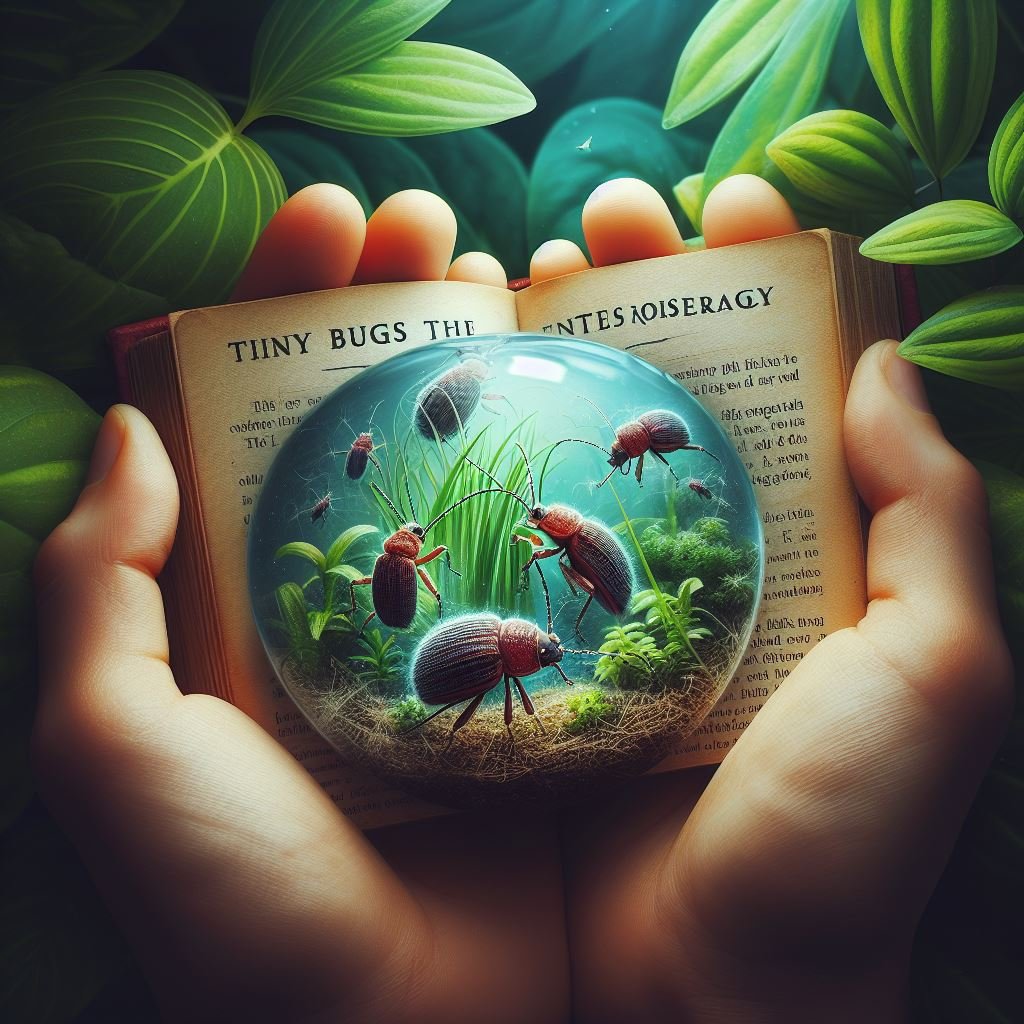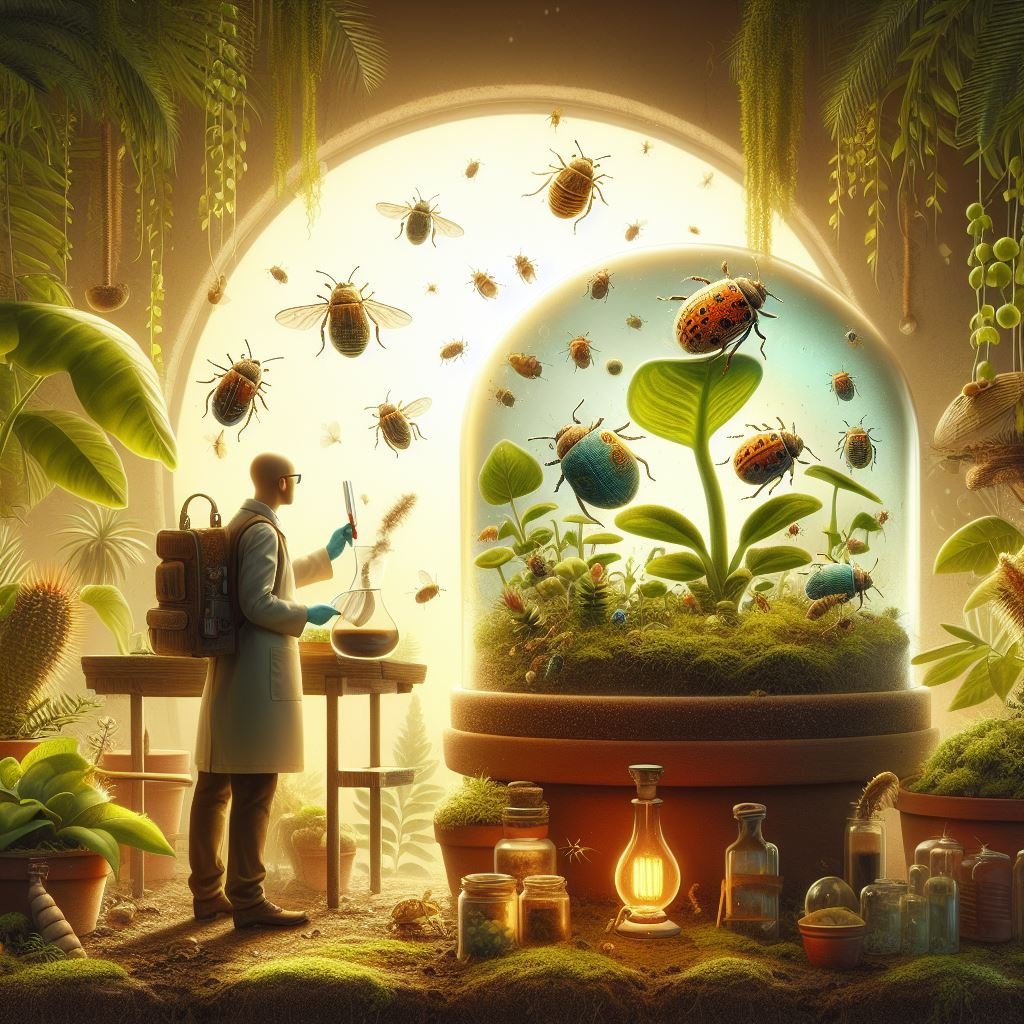
Hey, how are you? I hope you are fine. Take it easy & relax before starting reading my article. Houseplants are more than just decorative elements in our homes. Today, I’m sharing with you the secrets of tiny bugs in houseplants, including the crucial roles these tiny creatures play in their well-being. Understanding and appreciating these tiny bugs can lead to better care and a deeper connection to the natural world.
Understanding the Importance of Tiny Bugs in Houseplants:
Did you know the Importance of Tiny Bugs in our House Plants?Well, they’re not just for kicks! The authorities with this garden are like your unknown chieftains. They all play quite an important role, helping to make the noise later so that your plants can have babies, or even harm your green friends. They are like members who keep your inner jungle running smoothly. So, the next time you find one of these little buggers, thank them—they’re the secret sauce to keeping your plants happy and thriving!
Common Types of Tiny Bugs Found in Houseplants:
What have you noticed? Let me introduce you to some of these little friends:
Aphids: Thus, the dark ants hang out near damp soil, where their larvae make organic bits and roots their snacking points.
Aphids: Picture clusters of colorful leaves on your bottom – they’re aphids! They are like little sap boxes, sipping sap from the plant and causing the leaves to shrivel and turn yellow.
Spider Mites: You may need a magnifying glass to spot these nearly invisible web-spinners. They lie on the leaves, in the fine webs you like and make your tree look: dead and spotted.
Mealybugs: Soft and cuddly, these bugs might remind you of tiny clouds. They relax the joints of the leaves, drink the sap of the plant, and the leaves fall off.
“These little critters can help give your pleasure garden some TLC just to let you know!”
Why Tiny Bugs Matter in Houseplant Care:
Hey, do you Ever wonder why these bugs are so important to your houseplants?
Well, work behind the scenes to keep things tidy like your plant ally. From helping plants reproduce to keeping the pomace going, these little things play a big role. They are like the unknown overlords of your indoor garden, quietly making sure that the plants take control and thrive. So the next time you find them, give them a shout out – they’re doing important work for your green friends!
Getting to Know the Tiny Bugs:-
Lets know more about tiny bugs.

The Role of Aphids in Houseplants:
Do you know about the role that aphids play in your indoor garden? Because I give it:
Tiny but Troublesome: Aphids may be small, but if left unchecked, they can outgrow your houseplants.
Sap Suckers: These insects have clickers for their insect sap, which they suck through their mouths.
Pests: As they consult your plants, aphids can cause leaf curling, yellowing, and even drop prematurely
Reproduction: Aphids are known for their high reproductive rates, with females able to reproduce quickly without needing to.
Natural predators: Because of their predatory tendencies, aphids act as food for industrial insects such as ladybugs and lacewings, which helps control their populations.
The Intriguing Life Cycle of Spider Mites:
—–> Here the journey of life cycle of spider mites, raveling their secrets life cycle step by step:
Tiny Beginnings: Spider mites start as nearly invisible eggs nestled on the underside of plant leaves, often clustered together for protection.
Hatching into Action: From these eggs emerge tiny larvae, hungry for their first meal of plant sap, which they pierce and suck through specialized mouthparts.
Growing and Feeding: As they molt and mature into nymphs, spider mites continue their relentless feeding, leaving behind characteristic webbing as they move from leaf to leaf.
Mating and Reproduction: Adult female spider mites, identifiable by their larger size and rounded bodies, lay hundreds of eggs during their lifespan, ensuring the perpetuation of their species.
Continuous Cycle: With favorable conditions, such as warmth and humidity, spider mites can complete their life cycle in as little as a week, leading to rapid population growth and potential plant damage.
How Fungus Gnats Can Impact Your Household Plants:
Ever seen those little flying bugs on your house plants? Yes, they are fungus gnats, and they can be a real pain for your green friends. But here’s how they can mess with your plants:
Picture this: their larvae, who like to hang out in the damp soil, whipping around the roots of plants like they could be a buffet for you. Not good This snacking spree can stunt your plant’s growth and make it look sad.
Now, here’s the kicker: too much watering can make things worse at this throw party. But don’t worry! You can combat this by cleaning the soil and placing sticky traps to catch pests in their tracks.
Helping you get ahead of the game by telling you how bugs your plants can be. So, take a look, and your indoor garden will thank you!
Detecting and Dealing with Tiny Bugs:
Lets Detecting and Dealing with Tiny Bugs 😉

Signs of Infestation to Look Out For:
How do you ever find the bugs that are making mischief in your indoor garden? Let’s explore the effects of infectious diseases:
Dropping or yellowing: If the leaves start to drop or turn yellow for no apparent reason, it could be a result of soil or pest control.
Sticky residue or webbing: Sticky residue or fine webbing on leaves, especially these are common signs of pests like aphids or spider mites.
CYCRALOR: Look closely at your soil for any bug systems crawling around. They can be difficult to spot, but vigilance can reveal their presence.
Abnormal growth or damage: Look out for abnormal growth, holes or deformities in leaves, as alternative pests can be reversed.
By being vigilant and spotting these bugs early, you can take proactive steps to combat infestations and keep the garden healthy.
Non-Toxic Methods for Controlling Tiny Bugs:
Hey ! Here 3 tips to help you, control the Non-Toxic Methods of Tiny Bugs :
Neem Oil: This natural oil extract from the neem tree works as a mild but effective insect repellent. Simply dilute it with water and spray it on your plants to repel pests like aphids and spider mites.
Sticky Traps: Sticky traps near your plants for fungus gnats and flying insects like fruit flies. These traps are non-toxic and easy to use.
Channel insects:Introduce helpful bugs like ladybugs and lacewings into your indoor garden. They feast on pests like aphids and mealybugs, keeping their populations in check naturally.
With this non-toxic method, you can avoid using harmful chemicals in your home to maintain a healthy environment.
Preventative Measures to Keep Tiny Bugs at Bay:
Hey, we love our indoor gardens, but those instructional bugs can ruin our style, right? Don’t worry, I’ve got some down-to-eight tips to help you take control. First thing, watch your plants for eagles – if you spot yours or creepy crawlies, it’s time to take action. It’s important to keep your gardening area tidy, because bugs just love to hang out in a mess. If you have an ugly house, try some DIY remedies like cinnamon peppermint spray to get rid of them naturally. And remember, giving your green friends a little extra love and bug-proofing them goes a long way. So, let the ocean fold our hands and keep that attack at bay – our inner oasis covers it!
Embracing the Diversity of Tiny Bugs:
🥰🎉
The Surprising Benefits of Having Tiny Bugs in Houseplants:
Soil Helpers: Those little bugs in your indoor garden, like springtails and mites, are like mini gardens in disguise. They break things down and reveal them in the soil, making your plants look bigger and more comfortable.
Bug Bouncers: Some bugs are like superhero defenders of your tree. They collect bad bugs that can cause problems, so your plants can’t spray you with chemicals.
Pottinger: Ever get bugs crawling around in your plant pot? Well, they don’t offer to chat just for fun. They are actually helping to mix the soil, which is very important for your plant’s roots to get their air and water.
Eco-Friendly Psychics: To make these bugs do their work, you have your work cut out for you. You say no to harsh chemicals and yes to more natural, eco-friendly ways to care for your beautiful garden.
Plant whisperers: These bugs may be small, but they are substantial. Believe it or not, their presence or absence can affect your plants. So, if you want to hang out with them, it will have a good effect on your plants going forward!
How Tiny Bugs Contribute to the Ecosystem:
Tiny bugs in houseplants are part of a complex web of interactions that support plant growth and vitality. By embracing the diversity of insects in your indoor garden, you can create a balanced and sustainable environment.
Lesser-Known Tiny Bugs That Can Coexist Harmoniously with Your Plants:
Ever had a closer look at your indoor garden? Well, some of these blog critters are real pretty helpful! Take Springtail, for example. They like moisture and they like cleanliness, giving your plants nutrients in the soil for energy. Then there are predatory mites – they’re like guardians of your garden, picking out pests that could harm your plants. And don’t underestimate technology nematodes. These guide insects may seem trivial, but they won’t harm your plants to keep soil pests under control. And Tara-Rove is not talking about the Beatles – they’re like the vigilant guards, pushing publishing errors. So, the next time you find these little friends, let them know. They are working hard to create your beautiful garden!
Conclusion:
In conclusion, exploring our houseplant tiny bugs reveals one of the hidden helpers and a love of learning about them. From helping pollinators to acting as natural pest controllers, these guiding creatures play an important role in the health and well-being of our indoor gardens. By crediting their importance, only natural ecosystems and we achieve life deeply within our home. So, be the group of tiny bugs in the next family, when you oppose them, take time to call them our green sanctuary. After all, the construction of an indoor garden, even the most suitable animal, can provide great privacy.
FAQs:
Q: Are all tiny bugs harmful to houseplants?
A: No, some tiny bugs can actually benefit your plants by assisting in pollination or acting as natural predators to harmful pests.
Q: How can I prevent tiny bugs from infesting my houseplants?
A: Regularly inspecting your plants for signs of infestation, maintaining proper watering and light conditions, and using natural deterrents can help prevent tiny bugs from taking over.
Q: Should I be concerned about tiny bugs in my houseplants?
A: While some tiny bugs can cause damage to your plants, many are harmless and can even be beneficial. It’s important to educate yourself on the different types of tiny bugs and how to manage them effectively.

I have gone through your article and its a nice article.
I like the following:
“Tiny bugs in houseplants are part of a complex web of interactions that support plant growth and vitality. By embracing the diversity of insects in your indoor garden, you can create a balanced and sustainable environment.”
Thank you.